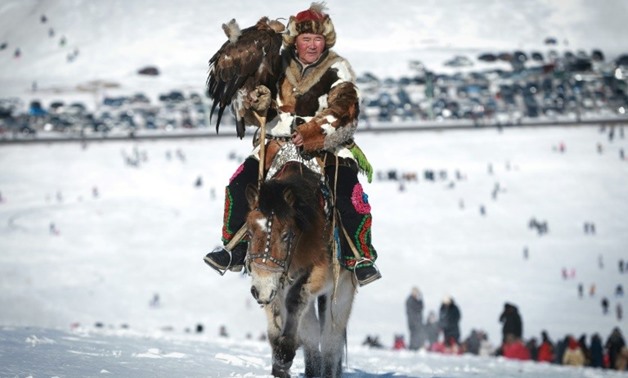
According to three studies published in the journalis Science and Nature, experts reported that horse domestication helped ancient Huns and Mongols supplant western "Indo-European" farmers in an incremental westward drive
CAIRO - 10 May 2018: Horse domestication changed the face of Eurasia, helping ancient Huns and Mongols supplant western "Indo-European" farmers in an incremental westward drive that also brought Hepatitis B and plague, scientists said Wednesday.
In three studies published in the journals Science and Nature, experts reported sequencing the genomes of dozens of humans who lived between 2,500 BC and 1,500 AD -- a 4,000-year period from the Iron Age to medieval times.
Their analysis showed a slow and steady west-to-east shift in the genetic makeup of the people who populated the Eurasian steppe -- a massive expanse stretching from Hungary and Romania in the west to Mongolia and northeast China in the east.
According to the data, the steppe population changed "from being of mainly western Eurasian genetic ancestry to... east Asian genetic ancestry," said Eske Willerslev of the University of Copenhagen, who co-authored two of the studies.
"It's also changing the steppe in terms of being Indo-European speakers to becoming Turkish-speaking people."
The Indo-European language group gave rise to modern-day tongues such as English, French, German, Russian, Hindi, and Persian, while Turkish is part of the Turkic language group thought to have originated in east Asia, including Mongolia.
From about 800 to 200 BC, the Eurasian steppe was dominated by the Scythians, a group of Iranian-speaking mounted warriors, the researchers said.
These were thought to have originated from Bronze Age farmers of western "European" ancestry.
Yet today, "the people living in central Asia and western Asia are really of Asian descent," said Willerslev. "We wanted to understand how this happened."
The Scythians, they found, were "absorbed and replaced" by Huns spreading westward out of Mongolia, "killing all the people they met but also mixing with them".
- Hold your horses! -
When the Hun empire collapsed about 1,500 years ago, other groups started moving westward -- most famously the Mongols.
"You can say that the vast majority of the genetic makeup of contemporary people in this 8,000 kilometre-long (4,971 mile) stretch across Europe and Asia has really mainly been formed within the last approximately 1,000 years," Willerslev told journalists.
For his colleague and co-author Peter de Barros Damgaard, a highlight of the research is to show how horse herding and riding changed the face of Eurasia.
"Starting with the domestication of course, which enabled these groups to grow in number and this expansion of pastoralist societies and then later, as we move into the late Bronze Age, we have the invention of the spoke wheel chariot which connects south Asia with Europe and establishes these huge trade routes," he explained.
"The next big change in the use of horses is to actually start riding them and shooting with bow and arrow as mounted warriors, and this infuses a military dynamic into the steppe" -- leading to a constant changes in empire and the genetic makeup of conquered populations.
The researchers also found that the Justinian plague pandemic, which killed millions of people on the European continent in the years 541 and 542, had come with the east Asian conquerers.
"Some people have argued it came from Greece," said Willerslev, but bacterial DNA found in the remains of two ancient humans shows "it was probably brought to Europe by the Mongol expansion".
Finally, the research showed that Hepatitis B, which kills almost a million every year due to complications such as liver cancer, was already present in Eurasia some 4,500 years ago.
Scientists are keen to learn more about when the virus arose, and the rate by which it mutates.


Comments
Leave a Comment